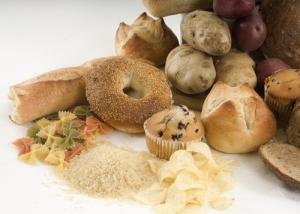[fusion_builder_container hundred_percent=”no” equal_height_columns=”no” hide_on_mobile=”small-visibility,medium-visibility,large-visibility” background_position=”center center” background_repeat=”no-repeat” fade=”no” background_parallax=”none” parallax_speed=”0.3″ video_aspect_ratio=”16:9″ video_loop=”yes” video_mute=”yes” border_style=”solid”][fusion_builder_row][fusion_builder_column type=”1_1″ layout=”1_1″ background_position=”left top” background_color=”” border_size=”” border_color=”” border_style=”solid” border_position=”all” spacing=”yes” background_image=”” background_repeat=”no-repeat” padding=”” margin_top=”0px” margin_bottom=”0px” class=”” id=”” animation_type=”” animation_speed=”0.3″ animation_direction=”left” hide_on_mobile=”small-visibility,medium-visibility,large-visibility” center_content=”no” last=”no” min_height=”” hover_type=”none” link=””][fusion_text]
In the first article of this series, I broke down bulking diets… Why they’re overrated, grossly ineffective, and potentially unhealthy.
Today I’m going to introduce you to a new way of adding muscle mass, one that will build muscle and melt bodyfat – at the same time.
But first, lets talk about two powerful allies in your body transformation arsenal — insulin, and insulin sensitivity.
Why Insulin and Insulin Sensitivity are Keys to Maximal Muscle Mass
Insulin is the most anabolic hormone you produce. It’s a powerful force for driving nutrient uptake into the cells.
Insulin helps to shuttle both glucose and amino acids into your muscles, glucose for use as fuel (stored as glycogen) for workouts and daily activity, and amino acids that contribute to both repair and growth.
It’s important to note that insulin is also the most potent fat storing hormone. It’s the main driver of glucose and fatty acids into fat cells, leading to increased bodyfat. This makes managing insulin one of the most important factors for putting on muscle and limiting bodyfat accumulation.
With traditional “linear” bulking, where calories are constantly elevated, insulin begins to lose its anabolic benefits over time, leading to a higher accumulation of bodyfat and less muscle growth. Insulin functions as its own feedback signal. The more insulin you make, and the more often you make it, the less sensitive your body becomes to it.
The body begins to ignore constant stimuli from any hormone over time. It’s like walking into a room with a fan. At first you notice the noise, but because it’s constant, you eventually tune it out.
However, your body does more than just ignore the signal when insulin is present too frequently. It also downregulates production of insulin receptors, which is referred to as “insulin resistance.”
In the case of insulin resistance, insulin production increases because it now takes more insulin to control your blood sugar. Your blood sugar stays elevated because the cells aren’t as receptive to insulin and glycogen uptake, so the body keeps producing more and more insulin to do the job that used to be done by much less. This often also leads to hypoglycemia, or low blood sugar.
The net result is that your blood sugar starts to run a little higher, and you have a constant elevation of insulin as well.
And this is where bodyfat really starts to come on.
 Muscle cells take up glycogen mostly in bursts after exercise or during large spikes of insulin. When your blood sugar and insulin are only slightly raised, your body stores the circulating glucose as body-fat to keep your blood sugar under control. This is why long-term bulking programs lead to large amounts of fat accumulation.
Muscle cells take up glycogen mostly in bursts after exercise or during large spikes of insulin. When your blood sugar and insulin are only slightly raised, your body stores the circulating glucose as body-fat to keep your blood sugar under control. This is why long-term bulking programs lead to large amounts of fat accumulation.
It gets worse. Along with increasing fat gain; when you enter a state of insulin resistance it actually becomes harder for you to gain muscle.
Remember, insulin is your main anabolic hormone, and when you stop making as many receptors, it decreases your ability to shuttle nutrients into the cells during and after training. So your recovery and growth are being starved, despite you consuming larger amounts of calories.
If we look at the opposite scenario, cutting on lower carbs and lower calories, insulin sensitivity is affected very differently.
When you keep carbohydrates and calories low, insulin levels are low, and so the glycogen levels in your cells start to shrink. Your body responds by shifting to using more fat for fuel to conserve the remaining glycogen in your tissues. It also increases the number of insulin receptors your cells have so that when you do take in carbohydrates it can quickly and efficiently start to rebuild those glycogen stores.
This makes it very easy for you to get nutrients into your muscles after training to recover and grow. So this brings about the big question…
“How can you optimize insulin during the bulking process?”
You need extra calories to grow, and you need insulin to take advantage of those calories. But the longer you take advantage of the high calories and insulin, the less effective it becomes, and the more fat you’re likely to gain.
Anyone who’s ever “dieted,” whether for fat loss or bulking, knows that things can go stagnant fast. The best results always come during the initial stages of a program, and become less and less effective the longer you are on it. It’s no different to your training, if you don’t change it up, your body adapts and you plateau.
The standard diet process (linear dieting) has never worked well for me, and probably not for you either (although it does work for some genetically blessed individuals).
It’s extremely frustrating when you keep cutting calories in small increments only to find that your bodyfat doesn’t seem to drop any faster, or worse, just stays the same. This also holds true when you keep trying to add small amounts of extra calories each week, only to start packing on bodyfat while seeing muscle gains stagnate.
But this is the traditional logic, you simply keep increasing calories in linear intervals to bulk, and decrease them in linear intervals to cut.
There’s a better way. It’s called CYCLING, and it refers to not sticking to a bulking or cutting style diet 100% of the time.
There are many ways to cycle your nutrition up and down.
One method is called micro-cycling. This is done throughout the week.
Micro-cycles consist of eating lower calories and lower carbs for a period, and then drastically increasing calories and carbohydrates for a day or two.
 Refeeding periods have been used for a long time as a practice during cutting phases, but I’ve experienced substantial improvements in my off season with a similar approach.
Refeeding periods have been used for a long time as a practice during cutting phases, but I’ve experienced substantial improvements in my off season with a similar approach.
As a pro-bodybuilder with a family and busy travel schedule, it can be impossible for me to get in all the calories I need some days — sometimes even weeks — and so refeeding periods have become a part of my diet to compensate.
Here’s how it works.
On busy days of travel and giving seminars, I may not be able to train, or my training is cut short. So I keep my carbs low to minimize fat gain and maximize insulin sensitivity. If you’re not training, why would you need large amounts of unnecessary nutrients? You need what you need to sustain your current state. No need for extra protein to recover, no need for extra carbs to refuel.
My training is not exceptional during these periods, but then when I get back on schedule I use a refeed day and find that my training intensity and strength goes through the roof. Great pumps, great energy, and great recovery.
Over a few months, I saw that I could pack on a substantial amount of muscle with minimal fat gain using this simple method.
Obviously, traveling and missing workouts isn’t ideal. Yet there is something to be learned in this. By optimizing your body’s ability to use nutrients, you massively increase your long term growth potential, and also all but eliminate plateaus. A “plateau” now might last 3-4 days as opposed to weeks or even years for some gym goers.
Caloric Micro, and Macro-Cycling is the solution.
The best athletes in the world have been doing it for years and now, finally, the rest of the world is catching on.
There are many ways to cycle macros. Many ordinary folks subconsciously do it already, by eating “normal” during the work week and then indulging on the weekends. However, if you apply a bit more structure and a lot more discipline, it works much better. Better than any other system ever conceived.
The catch is, everyone is different. Some do not handle carbs very well but thrive on fat. Others have very high carbohydrate tolerance but get torpedoed by extra fats.
But when you get dialed in and find your ideal level of carbs and length of reefed, watch out. Pumps, muscularity, and vascularity explode while fat seems to melt away. You start to make progress again, and training gets fun again.
So how do you set up your micro cycle?
Stay tuned for the next installment of this series.
Coach Ben
Complete Cyclical Bulking program for long-term muscle gain without the fat >>HERE<<
Click >>HERE<< to receive my personal advice on how to get past your sticking points
[/fusion_text][/fusion_builder_column][/fusion_builder_row][/fusion_builder_container]
